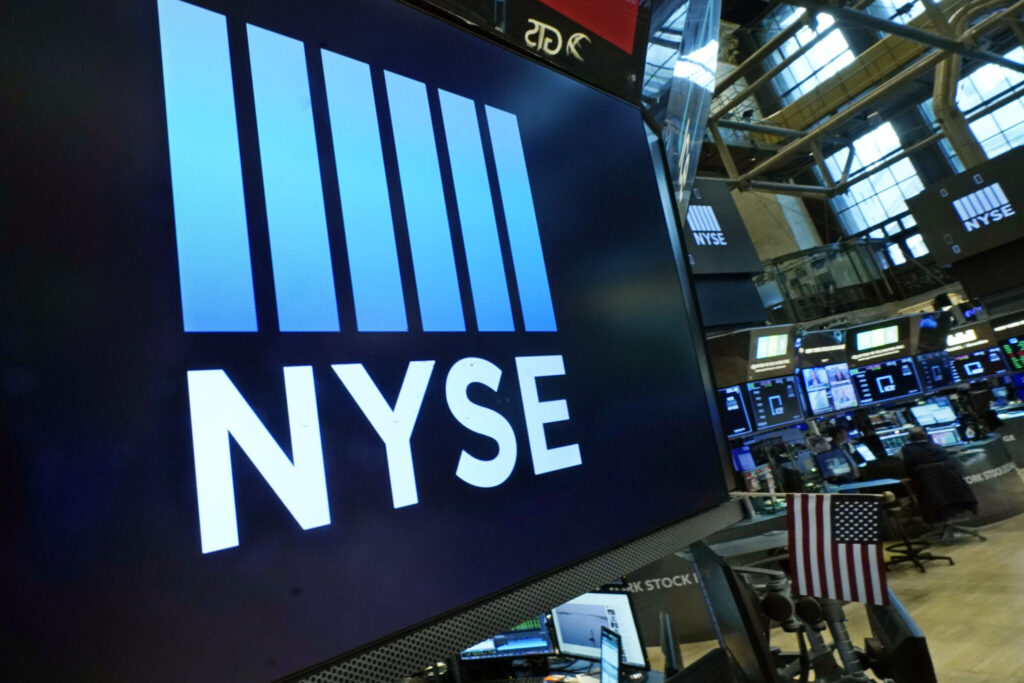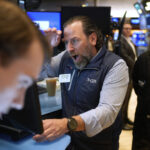The Dow Jones Industrial Average fell Wednesday as investors looked ahead to the Federal Reserve’s policy decision and subsequent press conference slated for the afternoon. The 30-stock average dipped 141 points, or 0.4%. The S&P 500 gained 0.2% while the Nasdaq Composite added 0.3%. UnitedHealth was the biggest drag on the Dow, losing 7%. The Associated Press has the story:
Wall Street drifts ahead of Fed’s rates decision
Newslooks- NEW YORK (AP)
Stocks are drifting Wednesday, as Wall Street waits to hear what the Federal Reserve’s latest economy-moving decision will be on interest rates.
The S&P 500 was 0.2% higher in morning trading after riding a winning streak to its best level since April 2022. The Dow Jones Industrial Average was down 89 points, or 0.3%, at 34,123, as of 10:05 a.m. Eastern time, while the Nasdaq composite was 0.2% higher.
Some stocks were making sharp moves, including drops for several health insurers after UnitedHealth Group flagged how many customers were getting knee procedures and other outpatient services done. That’s something that could raise costs for insurers, and UnitedHealth fell 6.9%. Humana dropped 11.6%.
Stocks of companies that make products used in hip replacements and other health procedures, meanwhile, were at the front of the market. Stryker rose 4.8%, and Boston Scientific gained 3.9%.
But the majority of Wall Street was quiet, with the main event coming later in the afternoon. That’s when the Federal Reserve will announce its latest move on interest rates after jacking them to their highest levels since 2007 in hopes of getting high inflation under control.
The wide expectation on Wall Street is that the Fed will make no move, which would be the first time in more than a year where it hasn’t raised rates. Inflation has come down since its peak last summer, and a report Wednesday morning showed price gains at the wholesale level eased in May to the most modest inflation from year-earlier levels since 2020.
Hikes to interest rates take a notoriously long time to take effect, and they can do so in unanticipated and damaging ways. Already, they’ve helped lead to three high-profile failures in the U.S. banking system, a monthslong contraction in the manufacturing industry and worries about a possible recession.
But many on Wall Street don’t expect this to be the end to the Fed’s rate hikes. The widespread bet is that it will resume raising rates in July.
Even if it’s come down, inflation is still too high for comfort. It’s hurting all kinds of households, particularly those with lower incomes. It’s also giving ammunition to the members of the Fed considered “hawks,” or the ones more inclined to keep raising rates, while “doves” favor a longer pause.
That’s setting the stage for what Gargi Chaudhuri, head of iShares Investment Strategy Americas, calls a “hawkish skip” for the Fed this afternoon.
She said that while easing inflation data “reduces the risk that the Fed may have to keep hiking into the 6% range, the data is not enough to conclude that the Fed will ease anytime soon.”
The federal funds rate is currently in a range of 5% to 5.25%, up from virtually zero early last year.
That could also be setting the stage for at least one dissent in the vote by the Fed’s policy making committee this afternoon. If that were to happen, it would be the first since last June, noted Brian Jacobsen, chief economist at Annex Wealth Management.
In the bond market, the yield on the 10-year Treasury fell to 3.79% from 3.82% late Tuesday. It helps set rates for mortgages and other important loans.
The two-year Treasury yield, which moves more on expectations for the Fed, fell to 4.62% from 4.67%.
In stock markets abroad, indexes were modestly higher in Europe and mixed across Asia. Japan’s Nikkei 225 rose 1.5%, continuing a strong run where it’s already jumped more than 28% this year.







